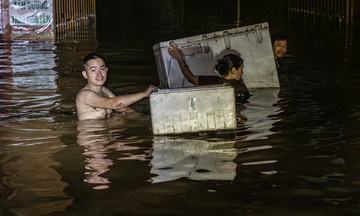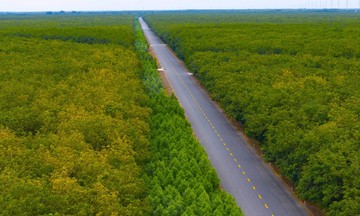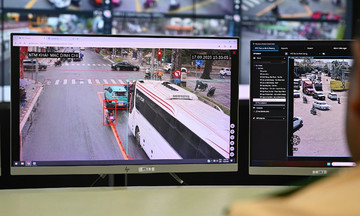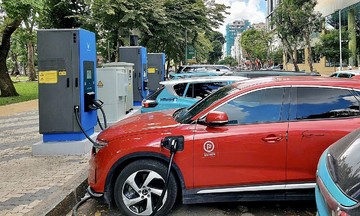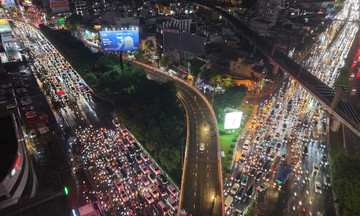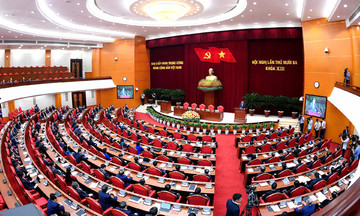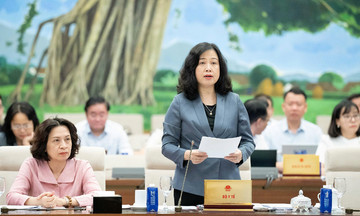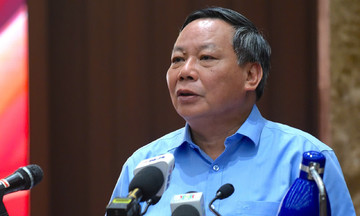This proposal was made by Ho Van Binh, Vice Chairman of the Can Gio People's Committee, at a conference held on the afternoon of 22/8 by the City Development Research Institute. The conference focused on implementing key tasks and solutions for the "Green Can Gio" action program.
In early June, Ho Chi Minh City launched the "Green Can Gio" action program. The goal is for Can Gio to become a model green and Netzero urban area within the next 5 years, showcasing sustainable marine economic development, eco-tourism, resorts, and environmental protection.
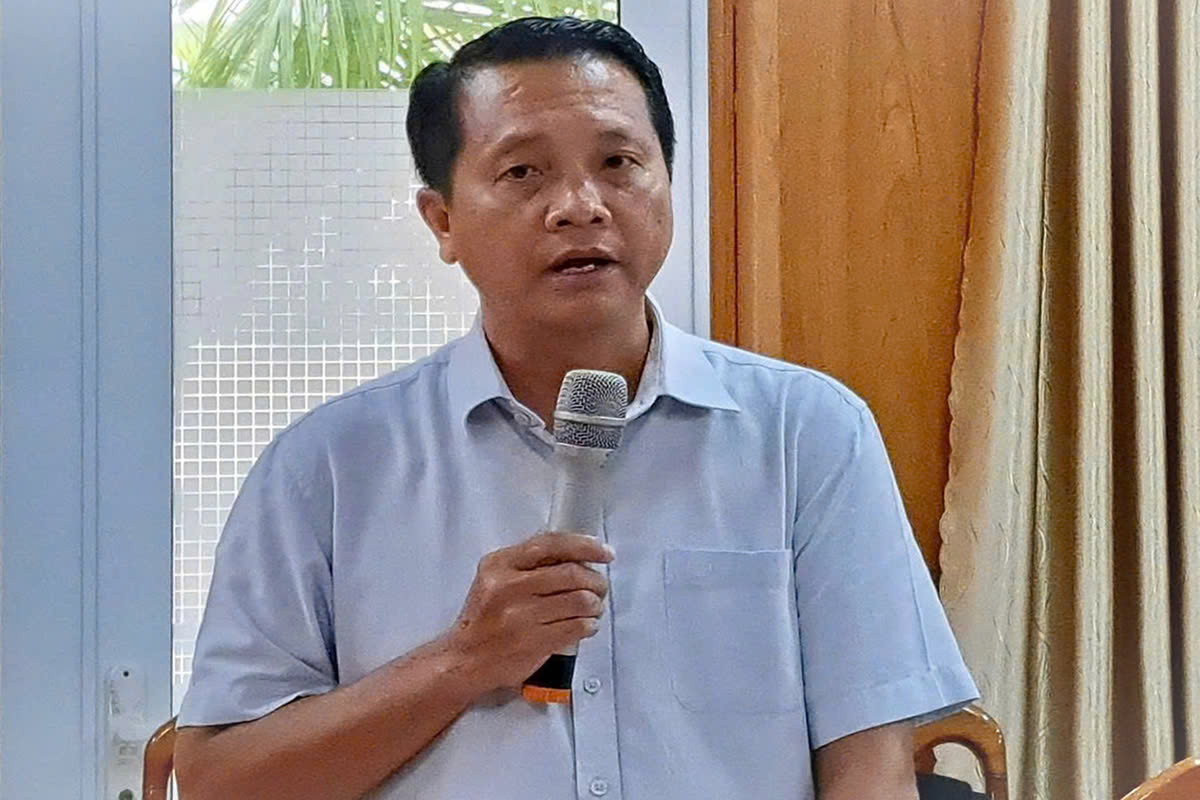 |
Can Gio People's Committee Vice Chairman Ho Van Binh speaks at the conference on the afternoon of 22/8. Photo: An Phuong |
Can Gio People's Committee Vice Chairman Ho Van Binh speaks at the conference on the afternoon of 22/8. Photo: An Phuong
Can Gio will receive investments in clean energy, reforestation, a complete transition from gasoline to electric vehicles, public transport using clean fuels, and restrictions on plastic bags. Chosen as the city's low-emission zone, Can Gio has over 70,000 residents, approximately 33,000 motorbikes, and nearly 1,000 cars.
According to Mr. Binh, while there are no longer any impoverished households in the area, near-poor households account for over 22%. Many of these residents have experienced livelihood disruptions due to the coastal urban area project, losing their sources of income.
"Vocational training and vehicle transition support policies are needed to alleviate the financial burden of purchasing new vehicles," Mr. Binh said, suggesting a 100% subsidy for the value of new electric vehicles. He proposed that funding should come from the budget, the company undertaking the coastal urban area project, and other participants in the green transition project.
With the implementation of the two-level government model on 1/7, Can Gio district was divided into 4 communes: Binh Khanh, An Thoi Dong, Thanh An, and Can Gio. At the workshop, commune leaders emphasized that policies should be applied uniformly to all residents, particularly near-poor households, and not just those affected by the coastal urban area project.
At the workshop, a representative from Vingroup mentioned proposed support policies for Ho Chi Minh City residents, including those in Can Gio, for purchasing and transitioning to electric vehicles. Specifically, from 1/8 to 31/10 of this year, a 100% subsidy on registration fees for VinFast electric motorbikes will be offered to customers with permanent or temporary residence in Ho Chi Minh City.
The company will also offer a 3% reduction in interest rates on electric car loans for 3 years, a 10% discount on electric motorbike prices and a 10% interest rate reduction on loans for 3 years, free charging at V-Green public charging stations, and assistance with the registration fee.
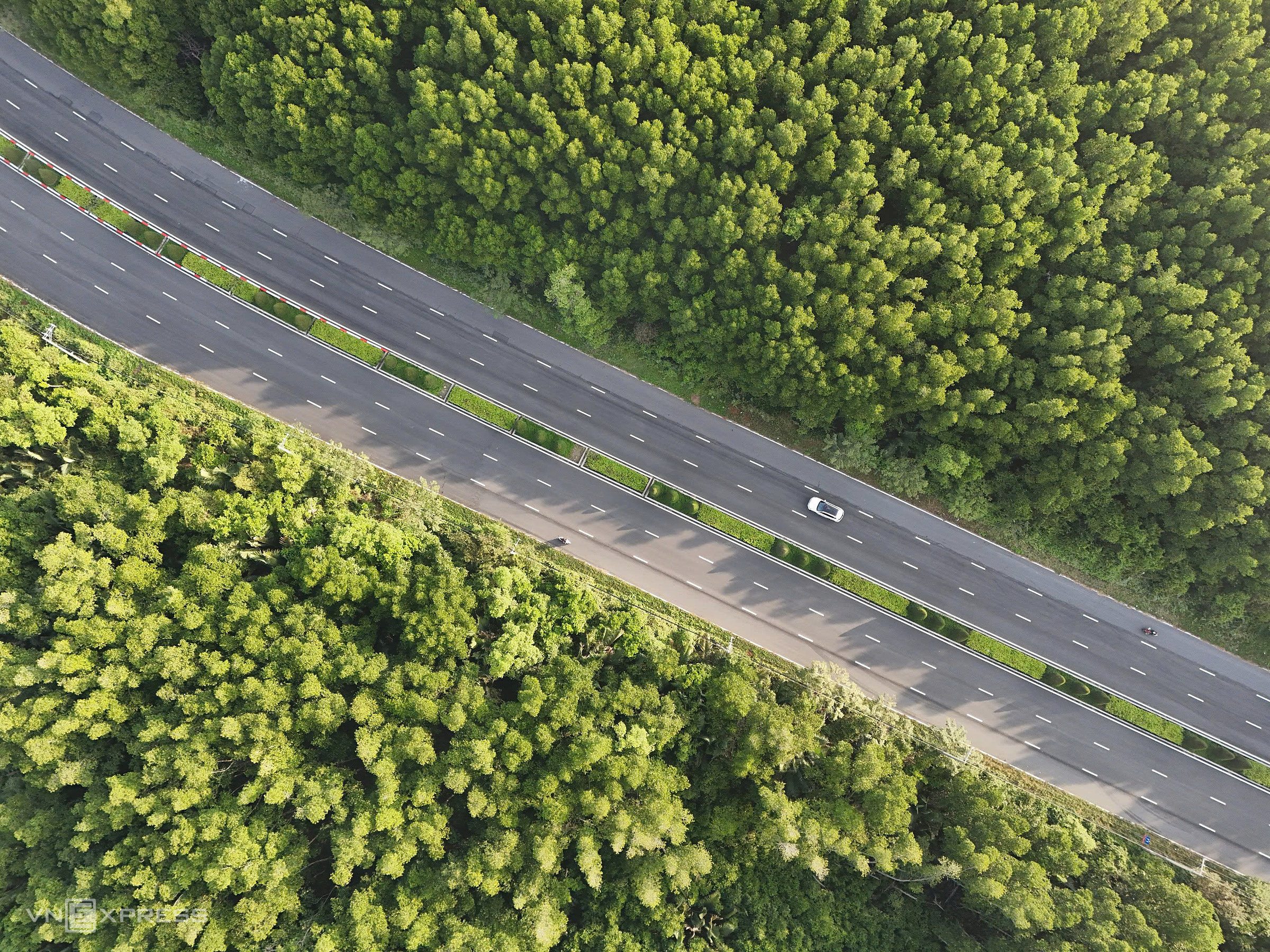 |
Rung Sac Road connecting downtown Ho Chi Minh City with Can Gio, December 2024. Photo: Quynh Tran |
Rung Sac Road connecting downtown Ho Chi Minh City with Can Gio, December 2024. Photo: Quynh Tran
Ho Chi Minh City's Department of Construction stated that green transition support policies will include support for transport businesses investing in public transport using clean fuels, interest rate support for electric charging station investors, and support for individuals switching from gasoline to electric motorbikes. These policies are expected to be submitted to the City People's Council in its September session.
Nguyen Khac Hieu, a representative from the Ho Chi Minh City Department of Industry and Trade, pointed out that Can Gio's current power grid is at the end of the city's power system. The further down the grid, the weaker the power supply, while Can Gio is developing several projects, such as the coastal urban area and the international transshipment port, leading to a high demand for electricity.
Meanwhile, Can Gio's offshore wind power has not been included in Power Development Plan VIII. Therefore, for the green transition, the local government encourages rooftop solar power installation to ensure household electricity supply and a backup power source connected from Vung Tau.
Can Gio is located about 50 km southeast of downtown Ho Chi Minh City and covers a natural area of 70,445 ha. Nearly 35,000 ha are covered by mangrove and protective forests. The Can Gio wetlands, with their restored post-war mangrove ecosystem, were recognized by UNESCO as the first World Biosphere Reserve in Vietnam.
According to Ho Chi Minh City's planning for 2021-2030, Can Gio will become an ecological urban area, preserving the biosphere reserve and focusing on marine economic development, particularly the transshipment port and free trade zone, logistics, tourism, coastal eco-urban areas, and renewable energy.
Le Tuyet




